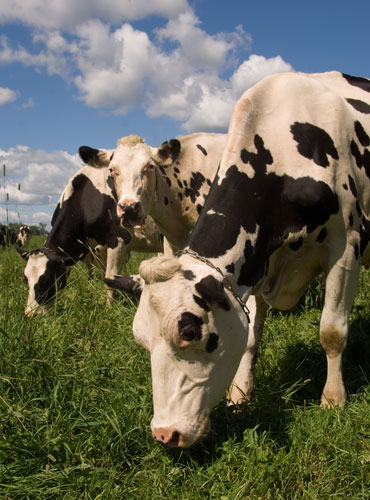Lesson 1. Planning a Grazing System
 Lesson 1 offers tools to assess your farm’s resources, determine a farm plan by setting, prioritizing and scheduling goals, and establish a monitoring system under a whole farm approach.
Lesson 1 offers tools to assess your farm’s resources, determine a farm plan by setting, prioritizing and scheduling goals, and establish a monitoring system under a whole farm approach.
There are basically two ways of managing the grazing area on a farm: continuous and managed grazing. Both strategies have advantages and disadvantages. In a continuous grazing system, set-up cost and time required for planning, managing and monitoring are lower. Nevertheless, if stocking rate is low, animals use the pasture resource inefficiently by spot grazing only 30 to 35% of the forage available. If the stocking rate is too high, overgrazing will occur. Both situations lead to weed problems and depletion of legumes and preferred grasses, resulting in high re-seeding and herbicide costs, and reduced meat and/or milk production per acre.
In contrast, managed grazing promotes pasture productivity and biodiversity (with fewer weeds), and allows for making hay or stockpiling to lengthen the grazing season. These advantages are a result of time spent in planning, managing and monitoring, and higher initial investment in setting up the system.
Some things to think about:
- How much capital do you have available for investment?
- What are the feed requirements of your animals?
- Do you have shortage/abundance of forage from your pastures?
- What is the fencing condition?
Lesson 1 (continued)
Click on the links below to finish Lesson 1:
- Whole Farm Planning
- Assessment of Resources
- Writing a Plan with Goals
- Monitoring
- Evaluate and Change
- Resources and Reading
- Lesson 1 Quiz
